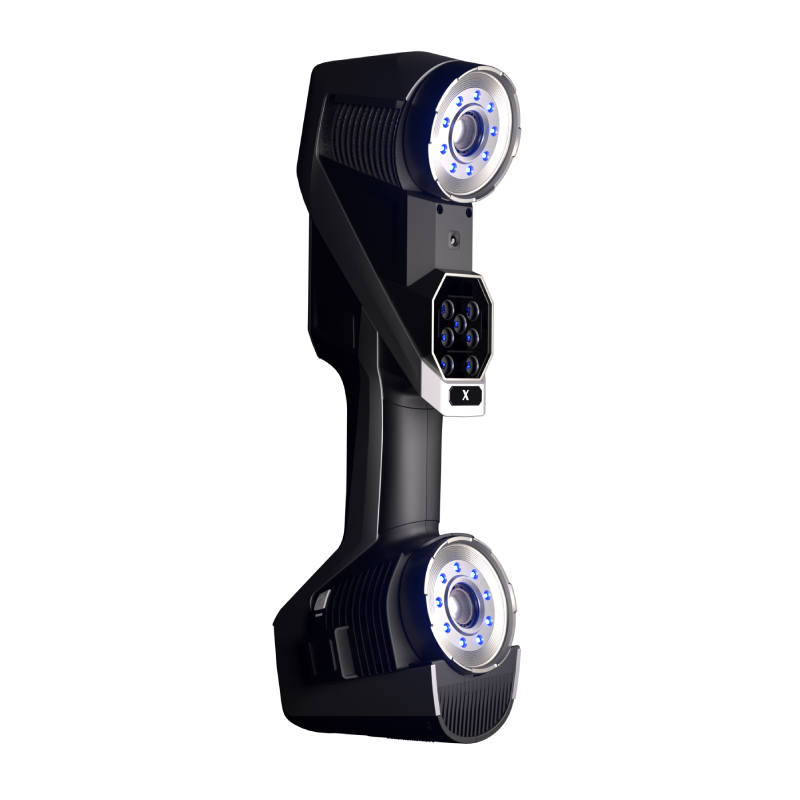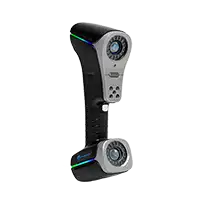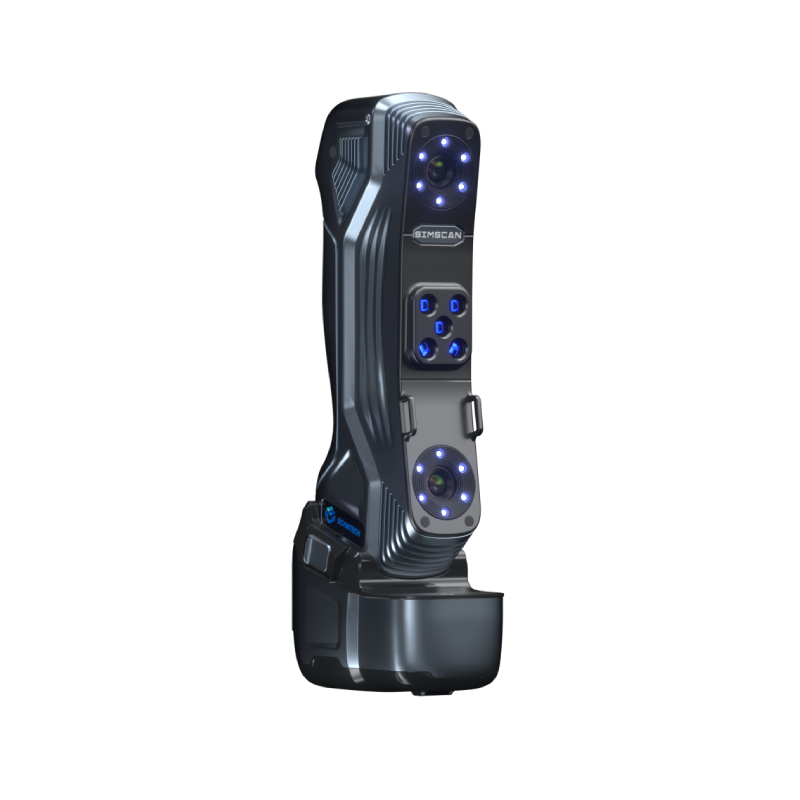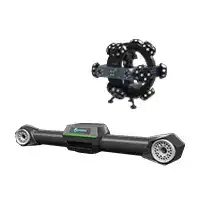3D Inspection in Metrology 3D Scanning
11 May, 2025
In the rapidly evolving world of manufacturing and inspection, precision is paramount. The traditional methods of measurement, while reliable, have been overshadowed by the advent of 3d inspection scanners. These devices have revolutionized metrology, offering a level of accuracy and efficiency previously unattainable. This article delves into the world of 3D inspection in metrology, exploring its evolution, applications, and the groundbreaking technology behind 3D scanning.
Introduction to 3D Inspection in Metrology
Definition and Importance of 3D Inspection
3D inspection in metrology refers to the process of obtaining precise measurements of an object's surfaces using advanced technology. This method has become critical in various industries where dimensional accuracy is crucial, such as aerospace, automotive, and manufacturing. The ability to produce accurate 3D models of components ensures that products meet design specifications and function as intended.
Historical Evolution from Manual to Automated Methods
Historically, inspection was a manual process using tools like micrometers and height gauges. These methods, though reliable, were limited in their ability to capture complex geometries. The advent of Coordinate Measurement Machines (CMMs) marked a significant advancement, offering greater precision and efficiency. However, the emergence of 3D inspection scanners has further transformed the industry, providing unparalleled speed and accuracy.
Comparison: CMMs vs. 3D Scanners in Metrology
Advantages and Limitations of Coordinate Measurement Machines
CMMs have long been the standard in the industry, known for their precision and reliability. They are capable of measuring parts with sub-micron accuracy, making them indispensable in sectors like aerospace and automotive. However, CMMs have limitations. They require physical contact with the object, which can damage delicate surfaces and limit accessibility to complex geometries. Additionally, their high cost and space requirements make them less feasible for some applications.
Emergence and Benefits of 3D Scanning Technology
3D inspection scanners have emerged as a formidable alternative to CMMs. These non-contact devices capture detailed 3D data quickly and accurately. They can handle complex geometries and difficult-to-reach areas without risking damage to the object. The flexibility, speed, and cost-effectiveness of 3D scanners make them an attractive option for metrology applications, challenging the supremacy of traditional CMMs.
Types of 3D Scanners for Metrology
Desktop, Handheld, and Other Types
The market offers a variety of 3D inspection scanners, each designed for specific needs. Desktop scanners are ideal for small, intricate objects, providing high precision in a compact form. Handheld scanners offer mobility and flexibility, allowing users to scan larger objects with ease. Other types include industrial fixed and portable scanners, each offering unique benefits for different applications.
Considerations for Choosing the Right Scanner
Selecting the right 3D inspection scanner depends on several factors, including the size and complexity of the object, the required accuracy, and the intended application. Understanding these parameters is crucial to ensure that the chosen device meets all the necessary requirements for precise measurement and inspection.
Accuracy and Resolution in 3D Metrology Scanners
Importance of Accuracy in Quality Assurance
In metrology, accuracy is essential for ensuring that components conform to design specifications. High accuracy in 3D inspection scanners allows for the detection of even the smallest deviations, which is critical in quality assurance processes. This precision helps in maintaining product quality and reliability, reducing the risk of failures or defects.
Resolution Requirements for Intricate Component Details
Resolution, the smallest discernible detail that a scanner can capture, is another crucial factor. Higher resolution in 3D inspection scanners means capturing more detailed data, essential for intricate components with complex geometries. A scanner's resolution must be sufficient to construct highly detailed 3D models, especially for applications requiring high precision.
Applications of 3D Scanning in Quality Assurance
Ensuring Product Conformity to Design Specifications
One of the primary applications of 3D inspection scanners is in quality assurance. By providing precise 3D models, these devices enable manufacturers to verify that products meet their design specifications. This process helps prevent costly manufacturing errors and ensures customer satisfaction by delivering products of the highest quality.
Role in Industrial and Regulated Environments
In industries like aerospace and automotive, where standards are stringent, 3D inspection scanners play a vital role. They ensure that components can withstand environmental and operational stresses, such as heat and pressure, by verifying their adherence to strict regulatory standards. This ability to ensure compliance and quality is invaluable in these highly regulated sectors.
Role of 3D Scanning in Reverse Engineering
Digitizing and Improving Legacy Components
3D inspection scanners are invaluable tools for reverse engineering. By creating precise digital models of legacy components, manufacturers can reproduce parts that are no longer available, ensuring the continued operation of older machinery. Additionally, these models can be modified to enhance performance, offering a cost-effective solution for modernizing outdated equipment.
Challenges in Reverse Engineering with Complex Surfaces
While 3D scanning simplifies many aspects of reverse engineering, challenges remain, particularly with complex or reflective surfaces. These surfaces can be difficult to capture accurately, requiring advanced scanning technology and techniques to ensure faithful reproduction of every detail in the digital model.
Deformation Analysis Using 3D Scanning
Assessing Prototype Performance and Structural Deformation
3D inspection scanners are also used in deformation analysis, evaluating how prototypes and structures perform under stress. This application is critical in industries like automotive, where components must be tested for durability and performance. By analyzing deformation, manufacturers can make data-driven decisions to improve design and ensure safety.
Applications in Automotive and Aerospace Industries
In the automotive and aerospace sectors, 3D scanning is used to assess structural integrity and performance. Whether evaluating the effects of stress on a prototype or examining wear and tear on operational components, 3D inspection scanners provide the detailed data needed to ensure safety and efficiency.
Speed and Efficiency in 3D Scanning Processes
Data Acquisition Speeds and Production Line Integration
The speed of 3D scanning is a significant advantage, particularly in high-throughput environments like production lines. 3D inspection scanners can rapidly capture detailed data, integrating seamlessly into automated processes. This efficiency reduces downtime and ensures that quality control keeps pace with manufacturing output.
Factors Influencing Scanning Efficiency
Several factors affect the efficiency of 3D scanning, including the scanner's data acquisition speed, field of view, and ease of use. Devices with high data acquisition speeds and wide fields of view can capture comprehensive details quickly, enhancing productivity and enabling faster decision-making in quality assurance processes.
Mobility and Flexibility of 3D Scanners
Benefits of Handheld vs. Mounted Scanners
The choice between handheld and mounted 3D inspection scanners depends on the application's requirements. Handheld scanners offer mobility and flexibility, ideal for scanning large and complex objects. Mounted scanners, on the other hand, provide stability and precision for high-volume or large-scale scanning tasks.
Overcoming Environmental and Logistical Limitations
Mobility is a key advantage of handheld 3D inspection scanners, allowing operators to navigate around obstacles and scan objects from any angle. This flexibility makes it easier to work in constrained environments and capture data from hard-to-reach areas, enhancing the scanner's utility across various applications.
Future Trends in 3D Metrology and Scanning
Technological Advancements and Potential Innovations
The field of 3D metrology is continuously evolving, with technological advancements driving new possibilities. Emerging innovations in sensor technology, software integration, and AI are expected to enhance the capabilities of 3D inspection scanners, offering even greater precision, speed, and ease of use.
Predicted Impact on Various Industries and Practices
These advancements will have a significant impact across industries, from manufacturing and aerospace to medical and art conservation. As 3D inspection scanners become more capable and accessible, their adoption will likely increase, transforming traditional practices and setting new standards in precision and quality assurance.
Conclusion: The Future of 3D Inspection in Metrology
The rise of 3D inspection scanners represents a pivotal shift in metrology, offering a powerful tool for precision measurement and quality assurance. As technology continues to advance, these devices will undoubtedly play an even more crucial role in ensuring the accuracy, efficiency, and reliability of products across various industries.
---
SCANTECH (HANGZHOU) CO., LTD. is a global leader in 3D scanning solutions, specializing in high-precision and cost-effective 3D scanners. With a strong R&D foundation, Scantech offers a wide range of products, including portable, tracking, and automated 3D scanners. Their innovative solutions cater to industries such as aerospace, automotive, and digital applications, providing unparalleled accuracy and efficiency. Scantech is dedicated to advancing 3D visual measurement technology, striving to be a top global brand in the field.










